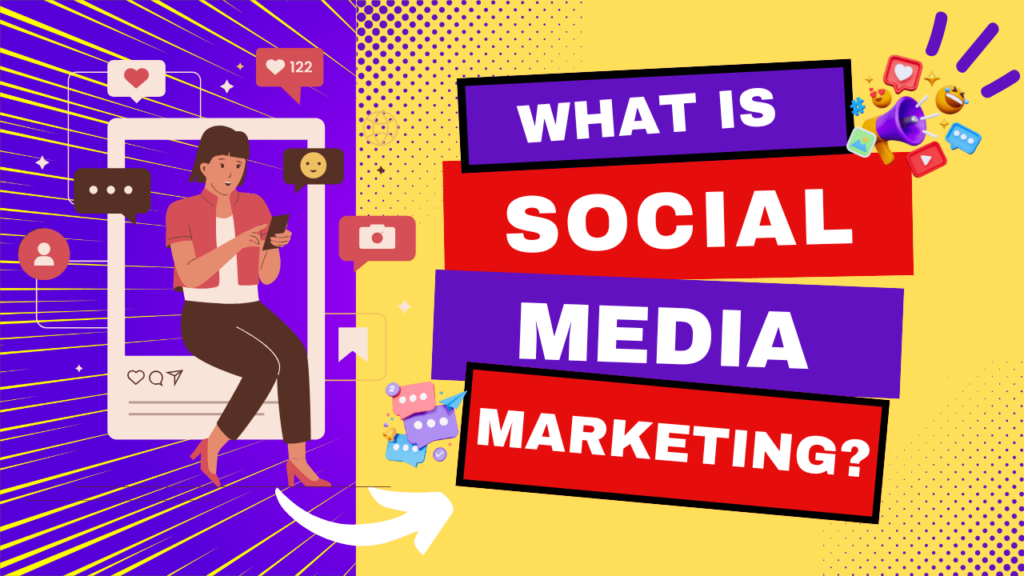
In today’s digital-first world, social media marketing is more than just a buzzword — it’s a powerful way to connect with your audience, build brand awareness, and drive business growth. Whether you’re a small business owner, an aspiring influencer, or a marketing enthusiast, understanding how social media marketing works is essential to your success online.
In this detailed guide, you’ll learn what social media marketing is, how it works, why it matters, and how to build your strategy. Let’s dive in.
What Is Social Media Marketing?
Social media marketing is the process of creating content for social media platforms to promote your brand, engage with your target audience, and achieve your marketing goals. It includes posting text and image updates, videos, stories, and paid ads to platforms like Instagram, Facebook, Twitter, LinkedIn, Pinterest, and more.
Why Is Social Media Marketing Important?
Because millions (even billions) of users actively use social platforms daily, businesses that leverage social media marketing can:
- Reach a wider audience
- Build deeper connections with customers
- Drive traffic to their website
- Generate leads and sales
Social media marketing is one of the most cost-effective digital strategies available today.
How Does Social Media Marketing Work?
Social media marketing works through strategy, content creation, community engagement, analytics, and advertising. Let’s break it down.
1. Setting Clear Goals
Before you post anything, you need to know why you’re using social media. Common goals include:
- Building brand awareness
- Generating leads
- Driving sales
- Improving customer service
- Growing website traffic
Every effective social media marketing plan starts with specific, measurable goals.
2. Understanding Your Audience
Successful social media marketing means speaking to the right people in the right way. Research your target audience:
- Age
- Location
- Interests
- Online behavior
- Preferred platforms
Use this data to shape your tone, content type, and posting schedule.
3. Creating a Content Plan
A content calendar helps organize your social media marketing efforts. Your plan should include:
1. Content Types:
- Educational posts
- Entertaining content
- Promotional offers
- Behind-the-scenes insights
- Testimonials or case studies
2. Tools You Can Use:
- Canva (for graphics)
- Buffer / Hootsuite (for scheduling)
- ChatGPT (for captions and ideas!)
4. Posting Consistently
Consistency builds trust. Whether it’s 3 times a week or daily, stick to a realistic schedule. Each post should reflect your brand voice and offer value to your followers.
5. Engaging With Your Audience
Engagement is key to social media marketing. Reply to comments, respond to DMs, like user content, and participate in trends. This builds a community, not just a following.
6. Tracking and Measuring Results
To know what’s working, analyze your metrics:
- Engagement rate (likes, shares, comments)
- Reach and impressions
- Follower growth
- Click-through rate (CTR)
- Conversions or sales from posts
Use platform analytics (like Instagram Insights or Facebook Business Suite) to monitor performance.
Popular Platforms for Social Media Marketing
Let’s explore how social media marketing varies across top platforms
- Great for community building and ads
- Supports groups, pages, and events
- Highly visual, ideal for brand aesthetics
- Reels and Stories boost reach
Twitter (X)
- Best for real-time updates and trending topics
- Great for building brand personality
- Excellent for B2B marketing
- Ideal for networking, hiring, and thought leadership
- Powerful for product discovery
- High-performing for niches like fashion, food, and DIY
Benefits of Social Media Marketing
Let’s look at the direct advantages of using social media marketing:
- Brand Awareness: Reach thousands of people quickly
- Traffic Boost: Link posts to your website or blog
- Better SEO: Social signals can improve rankings
- Cost-Effective: Free to start, with optional paid ads
- Lead Generation: Use CTAs and landing pages
- Customer Support: Faster communication through DMs or comments
Tools That Make Social Media Marketing Easier
Here are tools that help streamline your process:
| Purpose | Tool Examples |
|---|---|
| Content Creation | Canva, Adobe Express |
| Scheduling | Buffer, Hootsuite, Later |
| Analytics | Google Analytics, Meta Tools |
| Hashtag Research | Hashtagify, RiteTag |
| Competitor Analysis | BuzzSumo, Social Blade |
Organic vs Paid Social Media Marketing
| Aspect | Organic | Paid |
|---|---|---|
| Cost | Free | Requires budget |
| Reach | Limited to followers | Wider audience through targeting |
| Goal | Build brand trust | Fast results, conversions |
| Speed | Slow but steady | Immediate |
A strong social media marketing strategy usually combines both.
Social Media Marketing Strategy (Step-by-Step)
Follow these steps to create a beginner-friendly strategy:
- Define Your Goals
- Choose the Right Platforms
- Know Your Audience
- Create Engaging Content
- Post Consistently
- Track and Optimize
FAQs
Conclusion
Social media marketing is no longer optional—it’s essential. By understanding how it works, setting clear goals, posting consistently, and engaging with your audience, you can build a strong online presence that translates into real results.
Whether you’re a beginner or already creating content, a solid social media marketing strategy can elevate your brand and grow your business faster than traditional methods.
ABOUT THE AUTHOR
Chelsi Sharma is a passionate digital marketer helping individuals and brands grow online through SEO, email marketing, social media, and performance strategies. She specializes in beginner-friendly digital marketing techniques that deliver real results.
